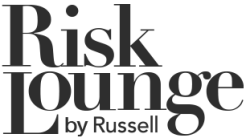
European non life insurers face a hike in the cost of capital as they seek to meet the demands of the new Solvency II regime a detailed study has revealed.
Oliver Wyman and Morgan Stanley have published a joint report, Insurance: Solvency II, Quantitative & Strategic Impact: The Tide is Going Out, which states that the impact of Solvency II will be greater than reduction in solvency ratios and will act as a catalyst for change for insurers.
"Solvency II will reveal the true economic volatility of many European insurers' balance sheets – and while we are supportive of the framework – in the short-run we believe this could lead to a higher observed cost of capital,” said Jon Hocking, Head of the Insurance Research Team at Morgan Stanley. “We expect insurers to adopt far more sophisticated asset-liability management techniques in order to optimise returns on economic capital”.
The report found that Solvency II, the EU insurers’ regulation which aims to improve the link between capital and economic risk, will have a profound strategic impact on the insurance industry and will cause a reappraisal of traditional business models. It states that M&A opportunities will arise from the transparency of insurers’ balance sheets and the resulting identification of risky businesses from those with sustainable profit streams.
“Therefore, insurers’ need to shift their product mix and achieve business diversification and balance sheet scale will drive M&A deals,” it adds.
The report applies its own Solvency II model to assess the impact of the regulation on four fictitious Europe-based insurers: a global composite, a global life company, a reinsurer and a pure primary nonlife business. Overall, the results show that strongly capitalised reinsurers will benefit the most from Solvency II owing to demand from mutuals that lack alternative sources of capital and an increase in the use of reinsurance as a risk mitigation tool.
The model suggests that small, geographically narrow insurers – including many mutuals – will be most challenged by Solvency II since most of the buffer capital comes from the benefit of business and product diversification.
“It’s clear from our analysis that certain business structures are inefficient from a capital perspective,” said Lukas Ziewer, Partner, Insurance Practice, Oliver Wyman. “Some groups still have several insurance carriers in single markets which support different brands, for example. Whilst consolidation of insurers across European markets is complicated, Solvency II means that it is very likely to happen.
“Overall, we expect a limited impact on group structures of mainstream companies in the short term, but a significant increase in intra-group capital optimization through reinsurance and leveraged capital structures.”





